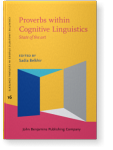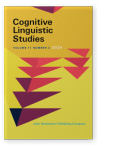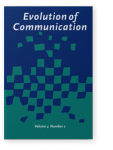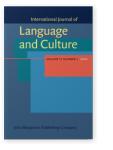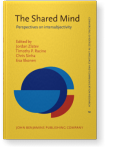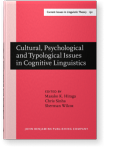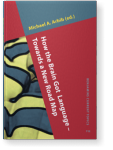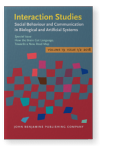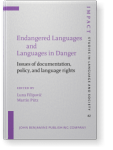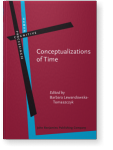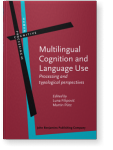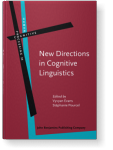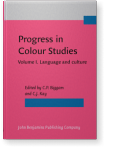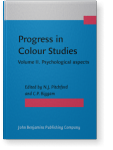Chris Sinha
List of John Benjamins publications for which Chris Sinha plays a role.
Book series
Journals
ISSN 2213-8722 | E-ISSN 2213-8730
ISSN 2214-3157 | E-ISSN 2214-3165
Titles
The Shared Mind: Perspectives on intersubjectivity
Edited by Jordan Zlatev, Timothy P. Racine, Chris Sinha and Esa Itkonen
[Converging Evidence in Language and Communication Research, 12] 2008. xiii, 391 pp.
Subjects Cognition and language | Cognitive linguistics | Cognitive psychology | Consciousness research | Evolution of language | Psycholinguistics
Cultural, Psychological and Typological Issues in Cognitive Linguistics: Selected papers of the bi-annual ICLA meeting in Albuquerque, July 1995
Edited by Masako K. Hiraga, Chris Sinha and Sherman Wilcox
[Current Issues in Linguistic Theory, 152] 1999. viii, 338 pp.
Subjects Cognition and language | Psycholinguistics | Typology
2020 Chapter 9. Embodiment, personification, identity: Metaphor and world view in a Brazilian Tupian culture and language Language, Culture and Identity – Signs of Life, Silva Sinha, Vera da, Ana Moreno-Núñez and Zhen Tian (eds.), pp. 181–202 | Chapter
In this paper we address ontological metaphorical linguistic expressions in a Brazilian Tupian language and culture, based on conceptual metaphor theory. We focus on metaphors of personification and body part constructions in the Amondawa language; analyzing examples from retellings of mythical… read more
2020 The comparative neuroprimatology 2018 (CNP-2018) road map for research on How the Brain Got Language How the Brain Got Language – Towards a New Road Map, Arbib, Michael A. (ed.), pp. 370–387 | Chapter
We present a new road map for research on “How the Brain Got Language” that adopts an EvoDevoSocio perspective and highlights comparative neuroprimatology – the comparative study of brain, behavior and communication in extant monkeys and great apes – as providing a key grounding for hypotheses on… read more
2020 Chapter 3. North-South relations in linguistic science: Collaboration or colonialism? Language, Culture and Identity – Signs of Life, Silva Sinha, Vera da, Ana Moreno-Núñez and Zhen Tian (eds.), pp. 43–62 | Chapter
In this chapter, we attempt to unmask the ideological bias inherent in influential conceptions of the methods, motivations and practices of endangered language documentation research (ELDR). We highlight the extent to which common justifications for ELDR suppress the sociocultural and historical… read more
2020 Praxis, symbol and language: Developmental, ecological and linguistic issues How the Brain Got Language – Towards a New Road Map, Arbib, Michael A. (ed.), pp. 239–255 | Chapter
This article focuses on the interweaving of constructive praxis with communication in ontogenesis, in phylogenesis and in biocultural niche evolution (ecogenesis), within an EvoDevoSocio framework. I begin by discussing the nature of symbolization, its evolution from communicative signaling and… read more
2020 Foreword Language, Culture and Identity – Signs of Life, Silva Sinha, Vera da, Ana Moreno-Núñez and Zhen Tian (eds.), pp. vii–viii | Foreword
2018 The comparative neuroprimatology 2018 (CNP-2018) road map for research on How the Brain Got Language How the Brain Got Language: Towards a New Road Map, Arbib, Michael A. (ed.), pp. 370–387 | Article
We present a new road map for research on “How the Brain Got Language” that adopts an EvoDevoSocio perspective and highlights comparative neuroprimatology – the comparative study of brain, behavior and communication in extant monkeys and great apes – as providing a key grounding for hypotheses… read more
2018 Praxis, symbol and language: Developmental, ecological and linguistic issues How the Brain Got Language: Towards a New Road Map, Arbib, Michael A. (ed.), pp. 239–255 | Article
This article focuses on the interweaving of constructive praxis with communication in ontogenesis, in phylogenesis and in biocultural niche evolution (ecogenesis), within an EvoDevoSocio framework. I begin by discussing the nature of symbolization, its evolution from communicative signaling and… read more
2016 North-South relations in linguistic science: Collaboration or colonialism? Endangered Languages and Languages in Danger: Issues of documentation, policy, and language rights, Filipović, Luna and Martin Pütz (eds.), pp. 25–43 | Article
In this chapter, we attempt to unmask the ideological bias inherent in influential conceptions of the methods, motivations and practices of endangered language documentation research (ELDR) by addressing the unequal exchange that frequently characterizes the relationship between the linguistic… read more
2016 When time is not space: The social and linguistic construction of time intervals and temporal event relations in an Amazonian culture Conceptualizations of Time, Lewandowska-Tomaszczyk, Barbara (ed.), pp. 151–186 | Article
It is widely assumed that there is a natural, prelinguistic conceptual domain
of time whose linguistic organization is universally structured via metaphoric
mapping from the lexicon and grammar of space and motion. We challenge
this assumption on the basis of our research on the Amondawa (Tupi… read more
2014 Is space-time metaphorical mapping universal? Time for a cultural turn Multilingual Cognition and Language Use: Processing and typological perspectives, Filipović, Luna and Martin Pütz (eds.), pp. 183–202 | Article
Space and time are often thought to be closely related, if conceptually distinct, cognitive and semantic domains. “Time as space” is a common conceptual and linguistic metaphor in diverse languages, and it has been proposed that this is a universal of human thought and language. This proposal, and… read more
2012 1. Event-based time intervals in an Amazonian culture Space and Time in Languages and Cultures: Language, culture, and cognition, Filipović, Luna and Katarzyna M. Jaszczolt (eds.), pp. 15–35 | Article
We report an ethnographic and field-experiment-based study of time intervals in Amondawa, a Tupi language and culture of Amazonia. We analyse two Amondawa time interval systems based on natural environmental events (seasons and days), as well as the Amondawa system for categorising lifespan time… read more
2009 Language as a biocultural niche and social institution New Directions in Cognitive Linguistics, Evans, Vyvyan and Stéphanie Pourcel (eds.), pp. 289–309 | Article
2008 15. Language and the signifying object: From convention to imagination The Shared Mind: Perspectives on intersubjectivity, Zlatev, Jordan, Timothy P. Racine, Chris Sinha and Esa Itkonen (eds.), pp. 357–378 | Article
In this chapter we argue that intersubjectivity cannot be grounded in individual mental or representational content. Intersubjectivity, therefore, is not equivalent to “common knowledge”, rather common knowledge (indeed individual knowledge in the true representational sense) depends upon… read more
2008 1. Intersubjectivity: What makes us human? The Shared Mind: Perspectives on intersubjectivity, Zlatev, Jordan, Timothy P. Racine, Chris Sinha and Esa Itkonen (eds.), pp. 1–14 | Article
2006 Dr Robert E. MacLaury 1944–2004: An Appreciation Progress in Colour Studies: Volume I. Language and culture, Biggam, Carole P. and Christian Kay (eds.), pp. ix–x | Miscellaneous
2006 Dr Robert E. MacLaury 1944–2004: An Appreciation Progress in Colour Studies: Volume II. Psychological aspects, Pitchford, Nicola and Carole P. Biggam (eds.), pp. xi–xii | Miscellaneous
1999 Introduction Cultural, Psychological and Typological Issues in Cognitive Linguistics: Selected papers of the bi-annual ICLA meeting in Albuquerque, July 1995, Hiraga, Masako K., Chris Sinha and Sherman Wilcox (eds.), pp. 1–8 | Miscellaneous
1987 Functional sentence perspective in discourse and language acquisition Functionalism in Linguistics, Dirven, René † and Vilém Fried (eds.), pp. 265–296 | Article
